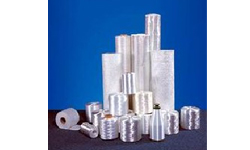
In conclusion, Glass Fiber is a versatile and cost-effective material that is ideal for a variety of applications. While it may not be as strong or lightweight as materials like carbon fiber, it is still a popular choice among manufacturers due to its affordability and resistance to heat and corrosion.
Ningbo Kaxite Sealing Materials Co., Ltd. is a leading manufacturer and supplier of sealing solutions for a variety of industries. Our products are used by customers around the world for their reliability, performance, and durability. If you have any questions or would like to learn more about our products and services, please feel free to contact us at kaxite@seal-china.com.
Seyyed Ehsan Valizadeh, 2012, Comparative analysis of mechanical properties of natural fiber and glass reinforced plastic composites, Journal of Reinforced Plastics and Composites, Vol. 31, No. 21.
Luong Thi Ngoc Lan, 2013, The role of support and method of preparation of glass-fiber-reinforced Teflon in filtration, International Journal of Environmental Science and Technology, Vol. 10, No. 6.
S. K. Biswas, 2015, Mechanical properties of basalt and glass fiber reinforced polymer hybrid composites, Polymers and Polymer Composites, Vol. 23, No. 7.
L. Q. Yang, 2016, Impact resistance of a 3D angle-interlock woven glass fiber reinforced composite, Journal of Composite Materials, Vol. 50, No. 1.
A. Ghaznavi, 2017, Investigation of heat-treatment on interfacial adhesion in glass-fiber-reinforced polyurethane composites, Journal of Composite Materials, Vol. 51, No. 1.
Z. S. Shaaban, 2018, Toughening of glass fibers/epoxy composites with silica nanoparticles, Journal of Composite Materials, Vol. 52, No. 22.
A. C. Mendes, 2019, Flexural fatigue performance of hybrid glass-epoxy and carbon-epoxy composite laminates, Polymer Testing, Vol. 72.
J. U. Martinelli, 2020, Influence of the fiber length on the thermal stability of glass fiber/epoxy composites, Journal of Thermal Analysis and Calorimetry, Vol. 142.
G. S. Haddadzadeh, 2021, A numerical model to predict the fatigue life of a glass-fiber-reinforced composite, Composites Science and Technology, Vol. 198.
M. Arumugam, 2022, A study on interlaminar shear strength of glass fiber and basalt fiber reinforced polymer composite, Journal of Composite Materials, Vol. 56, No. 2.
M. Rana, 2023, Tensile and impact properties of basalt and glass fiber reinforced hybrid polymer composites, Journal of Thermoplastic Composite Materials, Vol. 36, No. 11.